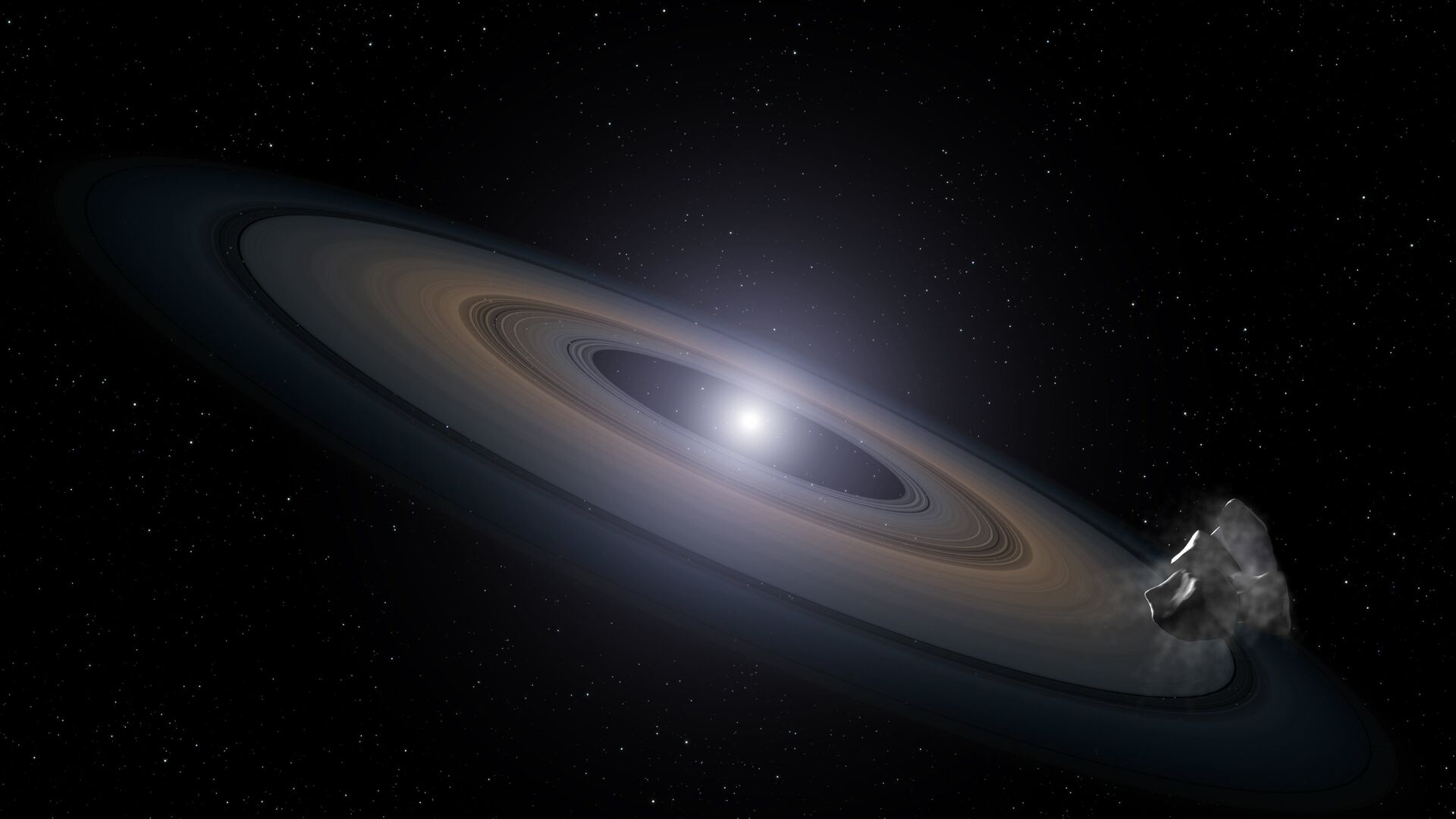https://sputnikglobe.com/20220309/large-molecule-found-near-distant-star-could-help-learn-more-about-origin-of-life-on-earth-1093725100.html
Large Molecule Found Near Distant Star Could Help Learn More About 'Origin of Life' on Earth
Large Molecule Found Near Distant Star Could Help Learn More About 'Origin of Life' on Earth
Sputnik International
The molecule’s presence was discovered using the Atacama Large Millimeter Submillimeter Array. 09.03.2022, Sputnik International
2022-03-09T18:40+0000
2022-03-09T18:40+0000
2022-03-09T20:37+0000
science & tech
star
dust
molecules
discovery
https://cdn1.img.sputnikglobe.com/img/102890/22/1028902296_0:428:3600:2453_1920x0_80_0_0_e32c999940327888359b33f821508850.jpg
A relatively large molecule that can potentially serve as "building block for sugars and other biomolecules" has been spotted by scientists at a disk of dust and gas that circles star IRS 48 located some 444 light years away from Earth, according to ScienceAlert.The molecule in question, dimethyl ether, is comprised of two carbon atoms, six hydrogen atoms, and an oxygen atom, and since it was found in a "dust trap" that will "clump together to form exoplanets," this discovery could potentially help scientists to gain further insight on how life in the universe emerges.As previous research revealed that the "dust trap" harbours ice containing complex molecules, Brunken’s team attempted to use the Atacama Large Millimeter Submillimeter Array (ALMA) to see what they can spot there.Since ice in the dust trap sublimates when the radiation from the host star reaches it, the media outlet notes, a powerful enough telescope might be able to detect molecules contained within that ice based on their spectrum, and the researchers argue that emissions they detected seem "strongly consistent with dimethyl ether."Astronomer Nienke van der Marel from Leiden Observatory also expressed hope that further observations could help "get a step closer to understanding the origin of prebiotic molecules in our own Solar System."Lets stay in touch no matter what! Follow our Telegram channel to get all the latest news: https://t.me/sputniknewsus
Sputnik International
feedback@sputniknews.com
+74956456601
MIA „Rossiya Segodnya“
2022
News
en_EN
Sputnik International
feedback@sputniknews.com
+74956456601
MIA „Rossiya Segodnya“
Sputnik International
feedback@sputniknews.com
+74956456601
MIA „Rossiya Segodnya“
science & tech, star, dust, molecules, discovery
science & tech, star, dust, molecules, discovery
Large Molecule Found Near Distant Star Could Help Learn More About 'Origin of Life' on Earth
18:40 GMT 09.03.2022 (Updated: 20:37 GMT 09.03.2022) The molecule’s presence was discovered using the Atacama Large Millimeter Submillimeter Array.
A relatively large molecule that can potentially serve as "building block for sugars and other biomolecules" has been spotted by scientists at a disk of dust and gas that circles star IRS 48 located some 444 light years away from Earth, according to ScienceAlert.
The molecule in question, dimethyl ether, is comprised of two carbon atoms, six hydrogen atoms, and an oxygen atom, and since it was found in a "dust trap" that will "clump together to form exoplanets," this discovery could potentially help scientists to gain further insight on how life in the universe emerges.
"From these results, we can learn more about the origin of life on our planet and therefore get a better idea of the potential for life in other planetary systems," said Nashanty Brunken, an astronomer from Leiden University. "It is very exciting to see how these findings fit into the bigger picture."
As previous research revealed that the "dust trap" harbours ice containing complex molecules, Brunken’s team attempted to use the Atacama Large Millimeter Submillimeter Array (ALMA) to see what they can spot there.
Since ice in the dust trap sublimates when the radiation from the host star reaches it, the media outlet notes, a powerful enough telescope might be able to detect molecules contained within that ice based on their spectrum, and the researchers argue that emissions they detected seem "strongly consistent with dimethyl ether."
"It is really exciting to finally detect these larger molecules in discs. For a while we thought it might not be possible to observe them," said Alice Booth, an astronomer from Leiden University. "What makes this even more exciting is that we now know these larger complex molecules are available to feed forming planets in the disk. This was not known before, as in most systems these molecules are hidden in the ice."
Astronomer Nienke van der Marel from Leiden Observatory also expressed hope that further observations could help "get a step closer to understanding the origin of prebiotic molecules in our own Solar System."
Lets stay in touch no matter what! Follow our Telegram channel to get all the latest news: https://t.me/sputniknewsus 
